The word ‘ciborium‘ probably comes from the Greek πυξίς, generic name for any vessel intended to contain small objects. It was mostly hardwood boxes but soon came used to define containers of metal or clay, ivory or bone.
In the Middle Ages people began to use the name “metal ciborium” to define the container intended to preserve the consecrated hosts, the sacred vessel kept in the Tabernacle and covered by a veil.
Initially metal ciboriums were cylindrical containers, intended only for the storage of hosts. Over time, metal ciborium became the container intended to distribute Holy Communion, in addition to storage of the consecrated hosts not consumed. Metal ciborium then assumed the shape of a chalice, with a much wider cup and the foot and the stem less tall of a common cup. The top is closed by a rounded cover surmounted by a small cross or by a statuette of Christ.
The ciborium is usually made of precious metal (gold, silver, gilded silver, etc.) with golden cup, being a sacred vessel in direct contact with the consecrated hosts.
Metal ciborium containing the hosts is usually preserved in the tabernacle. Only during the Eucharistic celebration, metal ciborium may be placed on the altar, as an object of devotion.
Metal ciboriums are always made of gold, silver and other precious metals and decorated with ornaments and carvings.
There are several types of metal ciboriums:
– Tower Ciborium, the oldest, a cylindrical shape with hinged lid;
– Chrism-Ciborium cross-shaped, where in the central part the host is kept and in the lower the holy oil;
– Viaticum Ciborium, to bring the Eucharist to the sick;
– Suspended Ciborium, with a ring on the lid that allows you to suspend it over the altar.

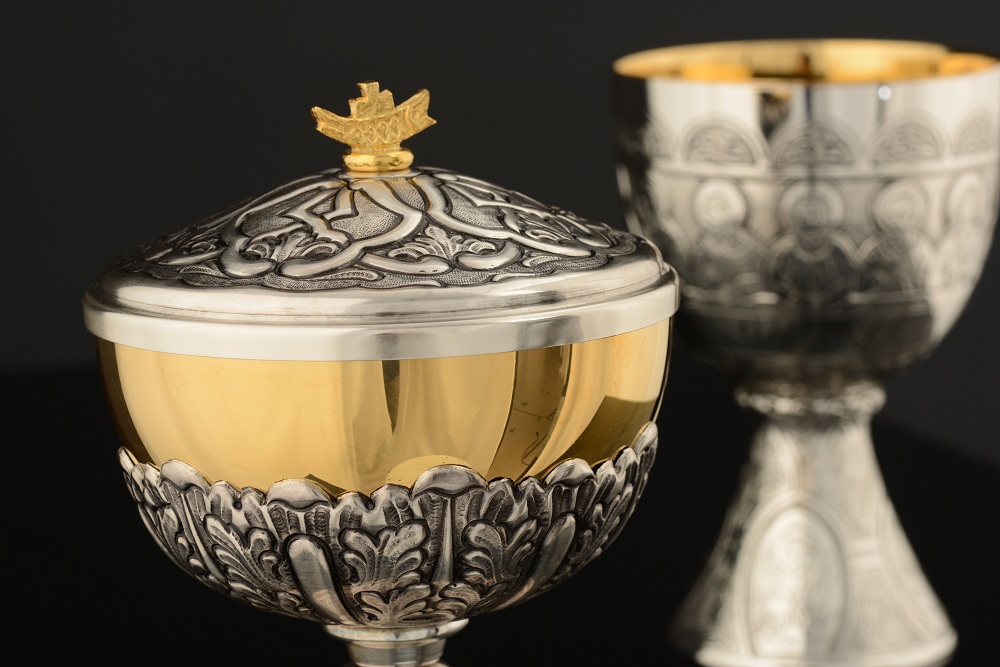
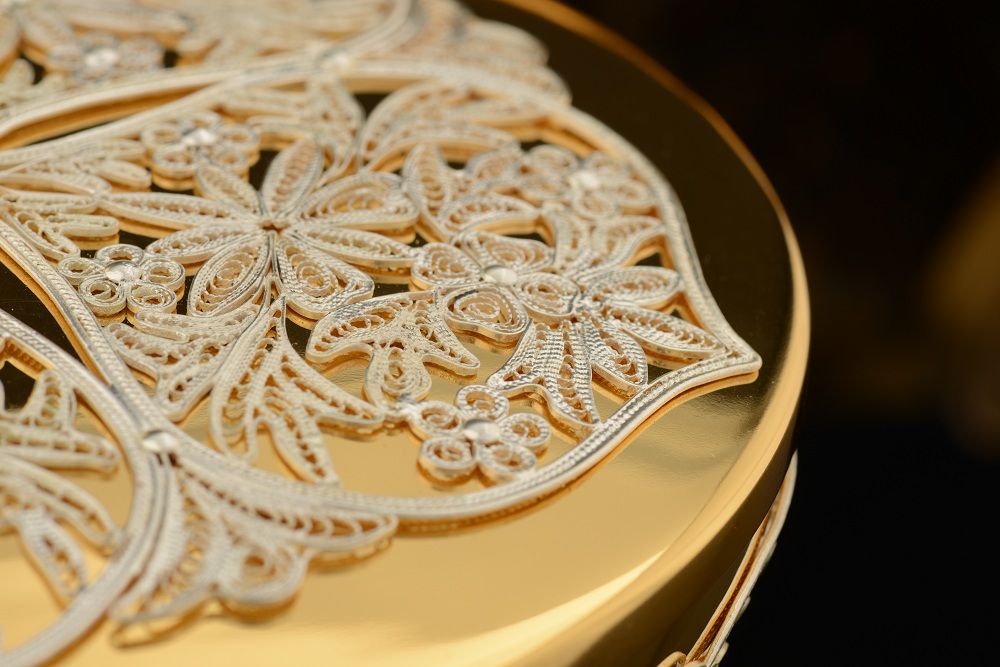
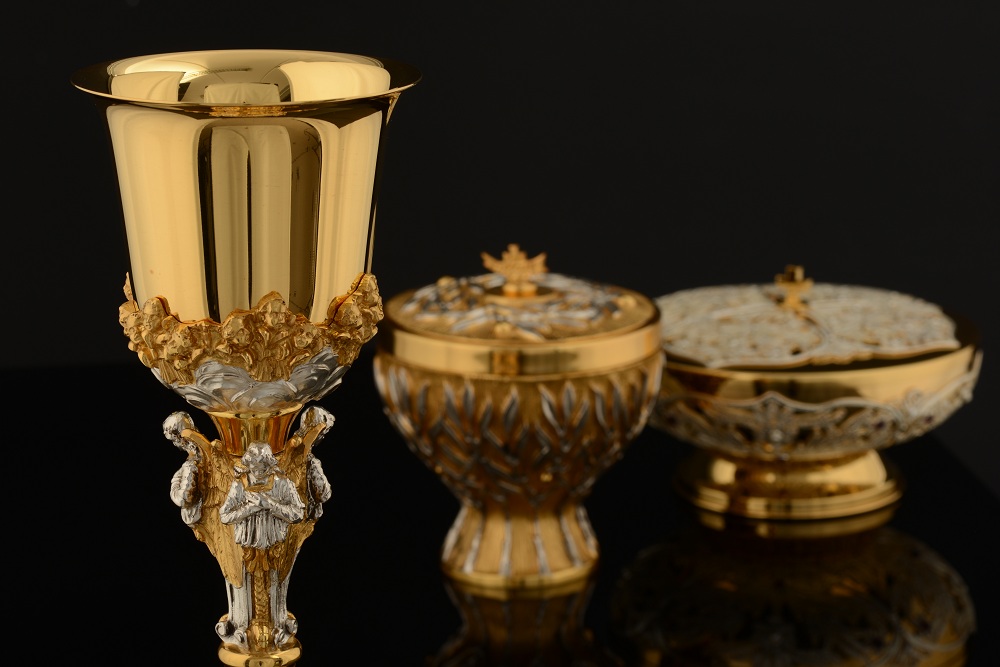
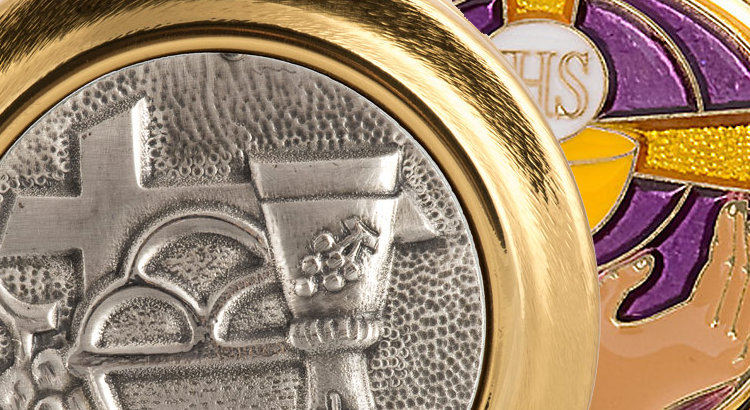
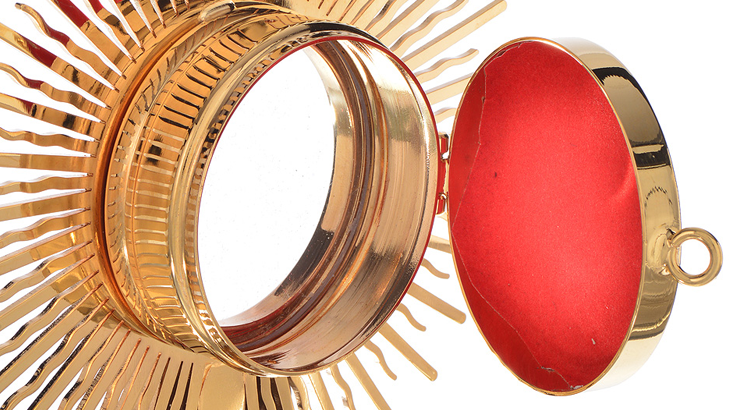

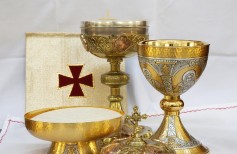
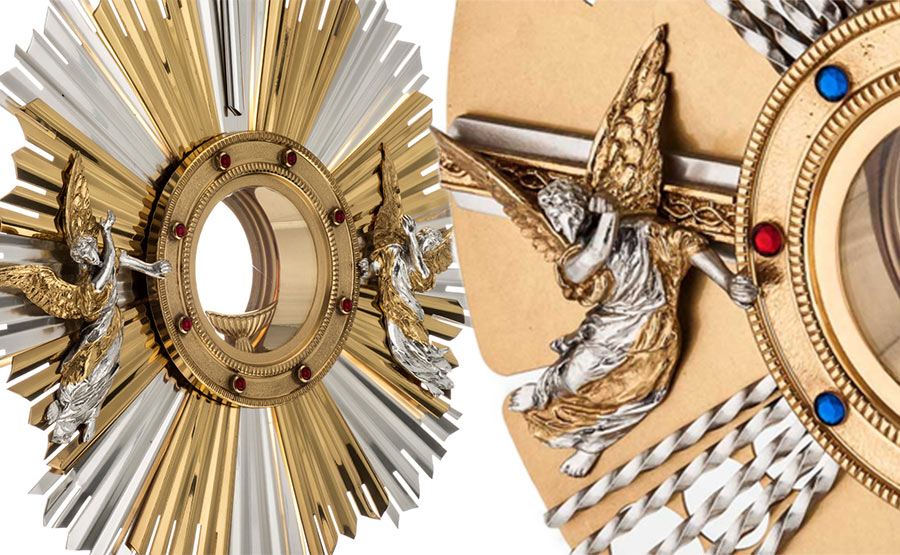
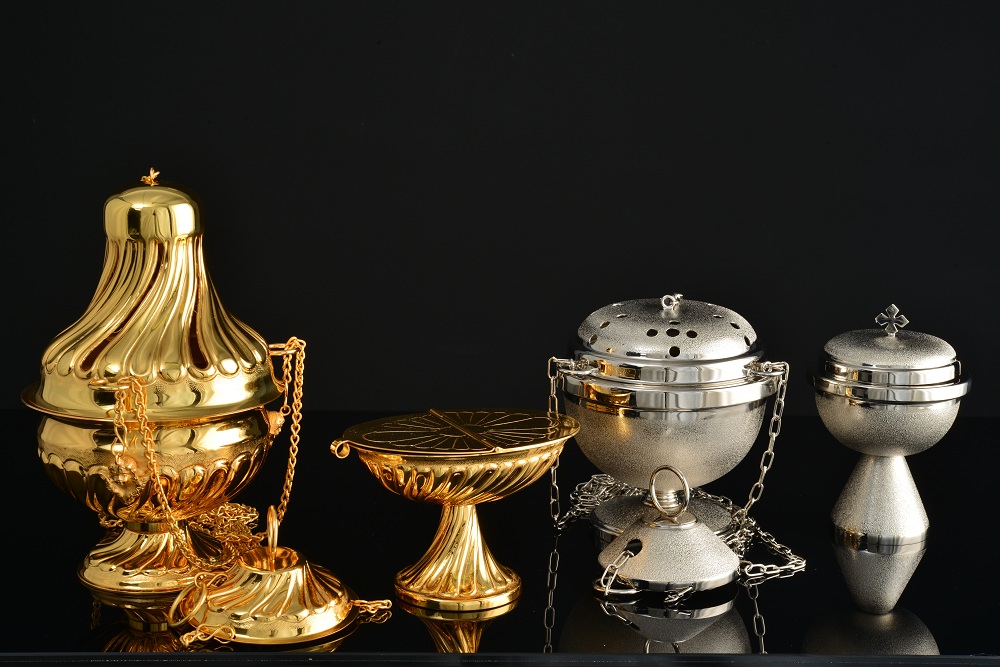
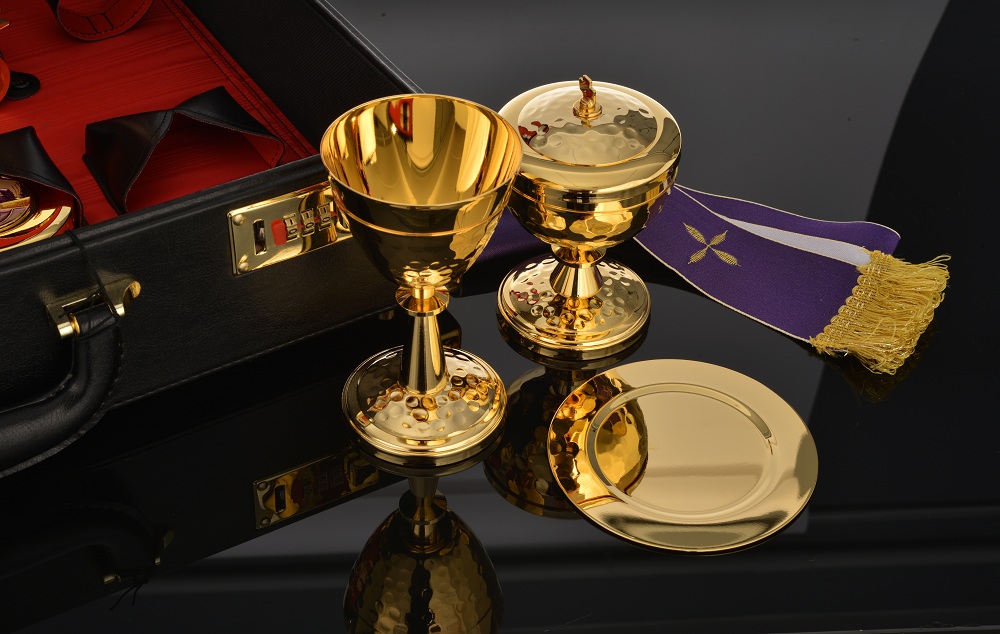








 19 March 2025
19 March 2025






